Neck pain physiotherapy treatment at home
Call Us: +91-9421750231, +91-7875411115.

How does Neck pain physiotherapy treatment at home help?
Neck pain physiotherapy treatment at home is one of the most common treatments for chronic neck pain. Most physiotherapy programs for neck pain involve applying treatments to reduce pain and/or stiffness enough to begin an exercise program of strengthening and stretching the neck. The specific methods and exercises used in physiotherapy, as well as the duration of the treatment plan, can vary from person to person.
Many studies have examined whether or not Neck pain physiotherapy treatment at home can help reduce spine-related pain, such as in the lower back or neck. Current medical literature suggests moderate to strong evidence supporting the benefits of physiotherapy’s role in reducing neck pain and improving range of motion. Some studies have found even more benefits from Neck pain physiotherapy treatment at home when combined with other treatment methods, such as aerobic activity.
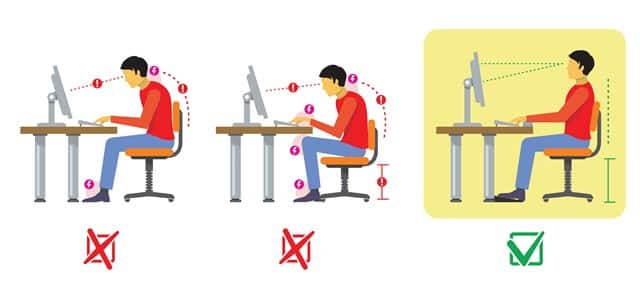
Neck pain physiotherapy treatment methods at home
Passive physical therapy
which involves treatments being applied without effort from the patient. Numerous treatment methods are available, such as applying ice packs, heat therapy, massage therapy, ultrasound, electrotherapy, and others. The goal of passive physical therapy is to help reduce pain and swelling.
Active physical therapy
which involves the patient moving his or her own body through exercises and stretches. By improving strength and flexibility in the neck, these muscles may become less painful and better able to maintain good posture, which reduces stress on the cervical spine.
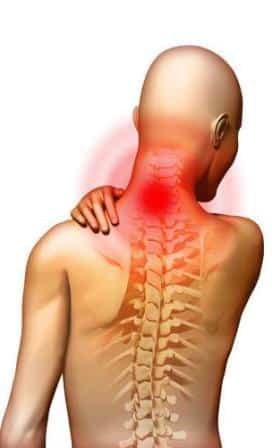
Various types of Neck pain
-
Unspecified chronic pain:
When neck pain lingers or keeps recurring, the exact source or mechanism of pain can be difficult to identify. Even without a diagnosis, increasing the strength of the neck’s muscles may help them to better support the cervical spine and become more resistant to pain.
-
Recovering from injury:
Some injuries, such as whiplash, can damage the neck’s soft tissues and joints, resulting in pain and/or stiffness that can last for weeks or much longer. A physical therapy program can reduce pain and help return the neck to normal functioning.
-
Recovering from surgery:
some surgeries performed on the neck can result in significant pain and stiffness in the weeks and months that follow. For example, an anterior cervical discectomy with fusion (ACDF) surgery involves the fusion of 2 or more vertebrae in the neck, which can alter how some neck and upper back muscles move. In such cases, physical therapy may help to work through stiffness, increase neck function, and reduce or prevent painful spasms as the muscles are reconditioned.
Can Neck pain physiotherapy treatment at home Help?
-
Deep tissue massage
This technique targets chronic muscle tension—tension in your neck that perhaps builds up through daily life stress. The therapist uses direct pressure and friction to try to release the tension in your soft tissues
-
Hot and cold therapies
By using heat, the physical therapist seeks to get more blood to the target area because an increased blood flow brings more oxygen and nutrients to that area. Blood is also needed to remove waste byproducts created by muscle spasms, and it also helps to heal.
Cold therapy slows circulation, helping to reduce inflammation, muscle spasms, and pain. Your physical therapist will alternate between hot and cold therapies.
-
Transcutaneous electrical nerve stimulation
You could even use this at home if your therapist thinks it’s necessary. A machine stimulates your muscles through variable (but safe) intensities of electrical current. TENS helps reduce muscle spasms, and it may increase your body’s production of endorphins, your natural painkillers. The TENS equipment your physical therapist uses is larger than the “at-home” use machine. However, whether large or small, a TENS unit can be a helpful therapy.
-
Traction
In traction, the therapist will try to stretch and mobilize your spine so that you feel less pain and can move more easily. He or she can do this manually—the hands-on approach—or by using a mechanical traction device.
-
Ultrasound:
By increasing blood circulation, an ultrasound helps reduce muscle spasms, cramping, swelling, stiffness, and pain. It does this by sending sound waves deep into your muscle tissues, creating a gentle heat that enhances circulation and healing.
-
Ergonomic advice Physiotherapy for Neck pain
Since work-related hazards account for more than 65% of Neck pain problems, physiotherapists also concentrate on providing accurate ergonomic devices, guiding the patient on using the appropriate infrastructure at work to avoid and cure Neck pain.
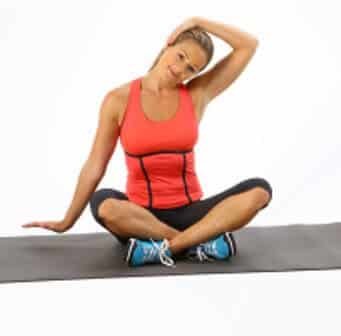

COMMON Neck pain physiotherapy treatment at home INCLUDE
Physiotherapy practice including diagnosis, prognosis, intervention and assessment of outcome for musculoskeletal disorders related to neck pain that are commonly managed with Physiotherapy techniques.
More specifically, in the paragraphs that follow, there will be a review of recommendations related to diagnosis and classification, examination, and treatment/interventions. These recommendations will be supported with a grade of evidence-based on Guyatt et al, as modified by MacDermid. In this modified system, the typical A, B, C, and D grades of evidence have been modified to include the role of consensus expert opinion and basic research to demonstrate basic biological or biomechanical plausibility.
Physiotherapy for Neck pain TECHNIQUES ARE:
- Patient education
- Exercise therapy
- Activity modification
- Posture correction
- Hot fomentation
- Neck bracing
Physiotherapy exercises For Neck pain
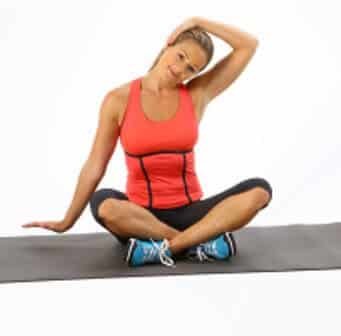
Seated neck stretch
Deceptively simple, this exercise can even be performed at your desk. For a seated stretch, sit upright in your chair with your feet flat on the ground. Extend your right arm along your right side and place your left hand on the top of your head. Tilt your head to the left, applying pressure with your hand to gently intensify the stretch. Hold for 30 seconds, then repeat for the right side. You will feel this stretch in the levator scapula muscles in the sides of the neck.

wall push-ups
This exercise can help strengthen your shoulders and support your neck muscles, without causing as much stress as typical push-ups. Stand facing a wall, with two to three feet of space in front of you and your feet shoulder-width apart. Place your hands against the wall, just below shoulder level. Start with straight arms, and bend your elbows slowly to bring your body closer to the wall. Repeat this 10 times for one or two sets.

Prone on elbow
- Purpose: To strengthen and stabilize the shoulder during weight-bearing activity.
- Position: Lie on your stomach and prop yourself up on your elbows.
- Action: Slowly shift your weight from side to side.
- Slowly raise one arm while balancing with your other arm. Repeat with the opposite arm.

Muscle Energy Technique (MET)
Muscle Energy Technique (MET) is a technique that was developed in 1948 by Fred Mitchell, Sr, D.O. It is a form of manual therapy, widely used in Osteopathy, that uses a muscle’s own energy in the form of gentle isometric contractions to relax the muscles via autogenic or reciprocal inhibition and lengthen the muscle.

Neck Rotation Neck pain physiotherapy treatment at home
- From a neutral position, turn the head slowly to the left as if looking over the shoulder.
- Pause for a moment before turning the head back to the center.
- Repeat on the right side.
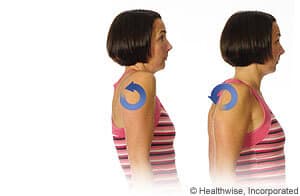
Shoulder rolls
- Start with the head and neck in a neutral position.
- Lift both shoulders in a shrugging motion, without moving the head or neck.
- Move the shoulders in a circular motion, squeezing the shoulder blades together and then releasing them to push them forward.
- Repeat the movement in the opposite direction.
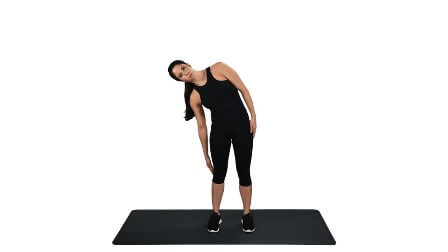
Side bends
- Extend both arms straight above the head and clasp the hands.
- Without bending the neck, lean slowly toward the left side.
- Return to the center, keeping the arms above the head.
- Repeat the movement on the right side.
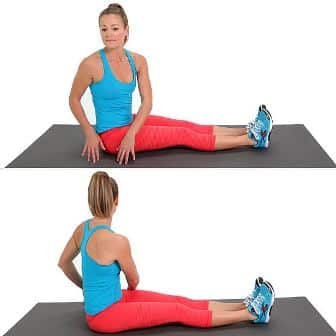
Seated twist Neck pain physiotherapy treatment at home
- Sit on a chair with a straight back.
Put the left hand on the right knee and gently pull to rotate the shoulders to the right as if looking behind the chair. - Slowly return to the center.
- Repeat the twist with the right hand on the left knee.
FREQUENTLY ASKED QUESTIONS
Can physiotherapy cure Neck pain?
Here’s when you should think about booking an appointment with a Neck physio. A pinched nerve is the result of bone, muscle or other tissues applying too much pressure on and around a nerve. If you experience numbness or a pins-and-needles sensation that doesn’t go away after a day or so, you might need assistance.
How long does it take to recover from neck pain?
Acute neck pain usually goes away within about one to two weeks. In some people, it comes back again in certain situations, such as after work or intensive sports. If the symptoms last longer than three months, it’s considered to be chronic neck pain.
What is the fastest way to cure neck pain?
For minor, common causes of neck pain, try these simple remedies:
Apply heat or ice to the painful area.
Take over-the-counter pain relievers such as ibuprofen or acetaminophen.
Keep moving, but avoid jerking or painful activities.
Do slow range-of-motion exercises, up and down, side to side, and from ear to ear.
WHAT MAKES YOU BETTER THAN OTHER PHYSIOTHERAPISTS?
you’ll benefit from a prompt flexible service. That includes a professional assessment and diagnosis followed by a tailor-made rehabilitation program suited to your individual needs. They have extensive experience, working both in clinics and Physiotherapists’ home visits.
What are the types of neck pain?
Muscle Pain. Muscle strains, sprains, and tears are one of the most common catalysts of neck pain. …
Muscle Spasm. …
Headache. …
Facet Joint Pain. …
Nerve Pain. …
Referred Pain. …
Bone Pain.
How much does a session of Manual therapy cost?
The average cost of a physiotherapy session is 600 – 700 Rs. This is the average across Pune. The cost of a physiotherapy session can be as low as 500 Rs. as manual therapy is also included in the session you don’t need to pay any extra cost for manual therapy.
How do you know if you need physiotherapy?
If you had a particularly hard day at the gym, you would feel sore afterward. But if your pain is persistent and not getting any better, that is a sure sign that you need to see a physiotherapist. Likewise, mobility and movement are reasonably constant for a person. Sure, with age they change, but not overnight.
WHAT SHOULD I EXPECT ON FIRST VISIT ?
Our Physiotherapists will try to understand what your goals are, they will explain how they will assess you and ask for your consent before they start. After the assessment, the physiotherapist will explain what physiotherapy can help you with, how long it might take, and the expected outcome from the treatment.
